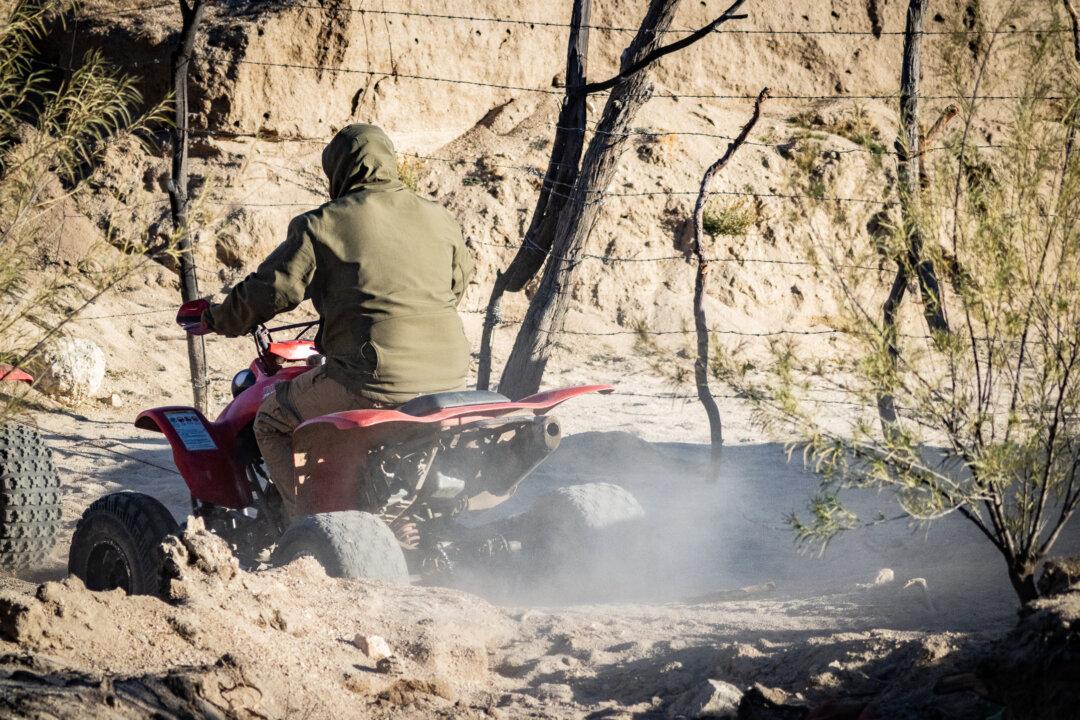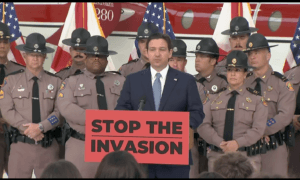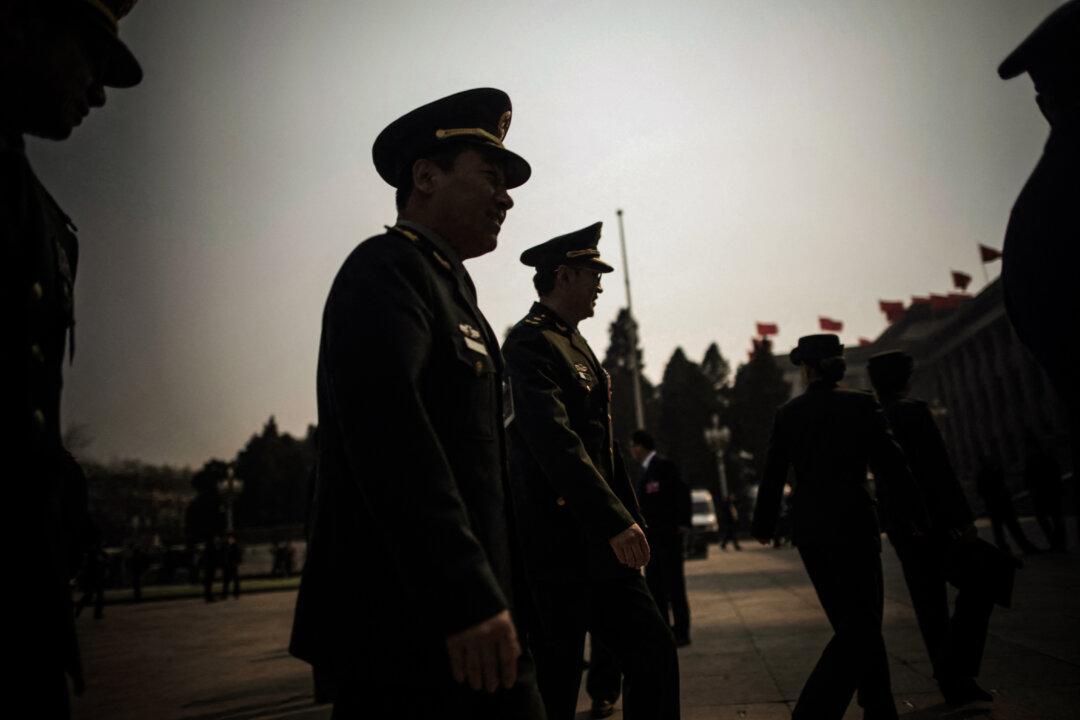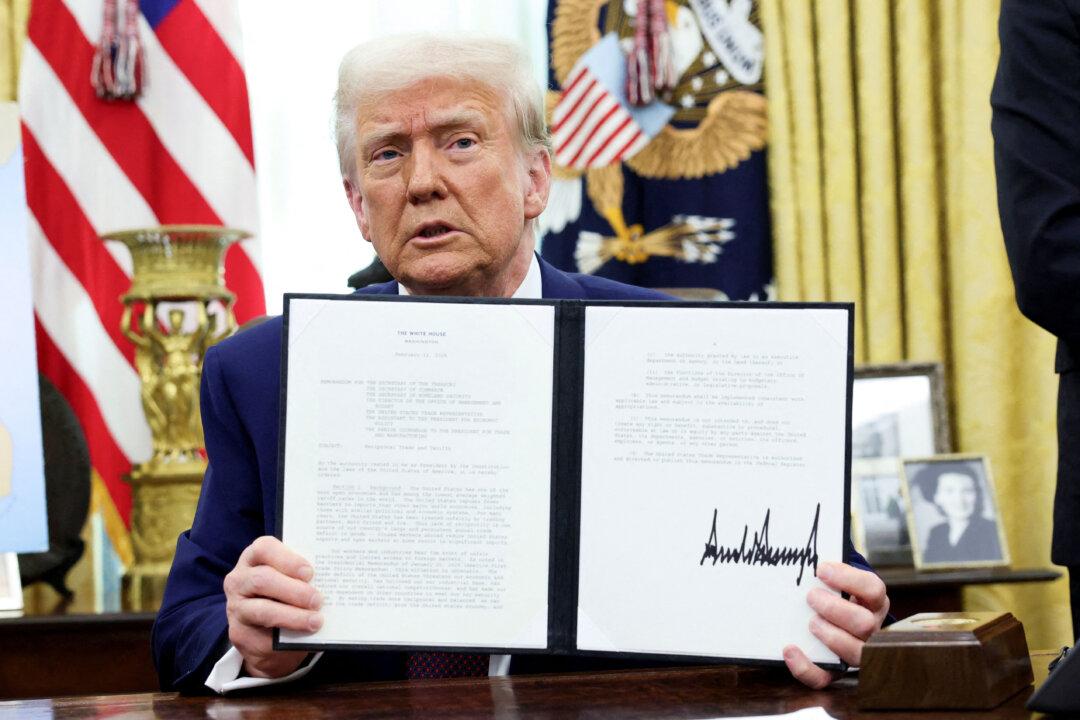Commentary
The Mexican government blames the United States for cartels deploying advanced weaponry while escalating violence in Mexico and Central America, fueling increased illegal immigration and drug trafficking into the United States.
For years, the cartels have been enhancing their weaponry, constructing armored cars, and now, incorporating the
use of drones. Additionally, Mexican authorities are discovering that cartels are deploying
military-grade weapons, including belt-fed machine guns, rocket launchers, and grenades. Since 2018, Mexican authorities claim to have confiscated
221 fully automatic machine guns, 56 grenade launchers, and a dozen rocket launchers from drug cartels.
Story continues below advertisement
The Mexican government is suggesting that the weapons came
from the U.S. military; however, that has not been established. All U.S. military weapons are stamped, labeled, and have serial numbers. Additionally, the types and models of weapons used by the U.S. military are well-known. The Mexican government, however, has failed to provide names or detailed information about many of the weapons. For example, the term “rocket launcher” can apply to many weapons, such as the Russian RPG-7 or Chinese copies of RPGs used in conflicts worldwide.
Each year, about
half a million weapons are smuggled into Mexico. While
the majority of these weapons come from the United States, that is not proof that U.S. military weapons are being smuggled into Mexico. Even if some weapons are found to have belonged to the U.S. military at one time, this does not mean that the United States is complicit or negligent in securing its weapons or that they came over the southern border.
It is possible that cartels have legally purchased the weapons from the same companies that supply the U.S. military. Another possibility is that these are older weapons that were lost or misdirected by third parties during the 1980s when the United States was supporting various military and rebel groups in the region.
One of the confiscated weapons identified by name was the
M134 Minigun, which the United States and other militaries have used since the 1960s. The ones found in Mexico could easily be old weapons from previous conflicts smuggled from Nicaragua or Panama.
The Mexican government has attempted to sue
American gun manufacturers, alleging awareness of weapon misuse in Mexico, and has even pursued legal action against U.S. gun shops. Yet all these lawsuits have been unsuccessful. An alternative argument could be made for American families of fentanyl overdose victims to sue the Mexican government, citing its failure to control fentanyl flow into the United States. This potential lawsuit might be considered more legally sound, given that fentanyl is illegal on both sides of the border, unlike guns protected under the U.S. Constitution and used for legitimate purposes by hunters, target competitors, and hobbyists.
Story continues below advertisement
In a similar vein, Mexico could potentially face legal action for its inability to prevent the entry of illegal immigrants into the United States or for crimes committed by those who entered illegally. The central issue is that Mexico seems incapable of effectively controlling drug cartels and is deflecting blame onto the United States as a scapegoat.
In June, Mexico’s Defense Secretary Luis Cresencio Sandoval revealed that the Jalisco New Generation Cartel (CJNG), one of the most powerful cartels, was discovered with
five rocket launchers. The CJNG is currently engaged in a turf war with the
Sinaloa Cartel in Chiapas, a once
relatively peaceful region on the Guatemalan border that has become a battleground due to its strategic importance on the cocaine smuggling route to the United States.
As violence escalates, villages are transforming into ghost towns, prompting civilians to flee, contributing to the larger
issue of illegal immigration into the United States. In 2023, the U.S. Border Patrol recorded a historic high of
2.5 million encounters with illegal immigration across the Southern Border.
Mexico blames the United States for its guns, but effective self-policing in Mexico would mitigate cartel violence on both sides of the border. Now, U.S. taxpayers shoulder the responsibility for caring for
illegal immigrants and asylum seekers entering the country, a situation exacerbated by the
Biden administration’s immigration policies and weakened border protection.
Views expressed in this article are opinions of the author and do not necessarily reflect the views of The Epoch Times.







